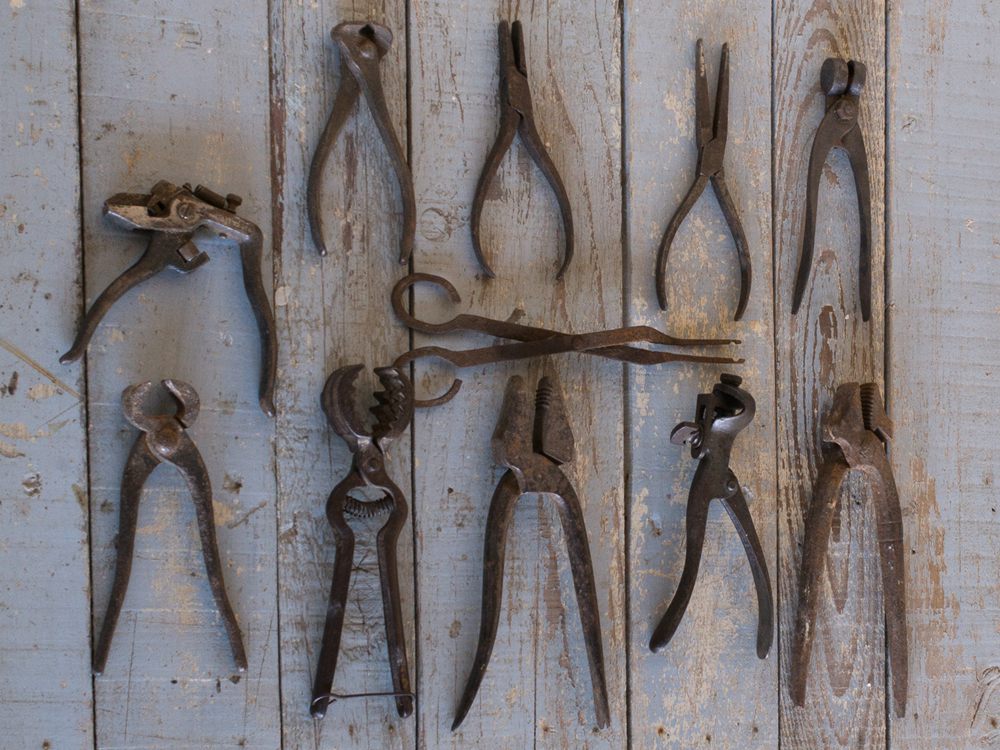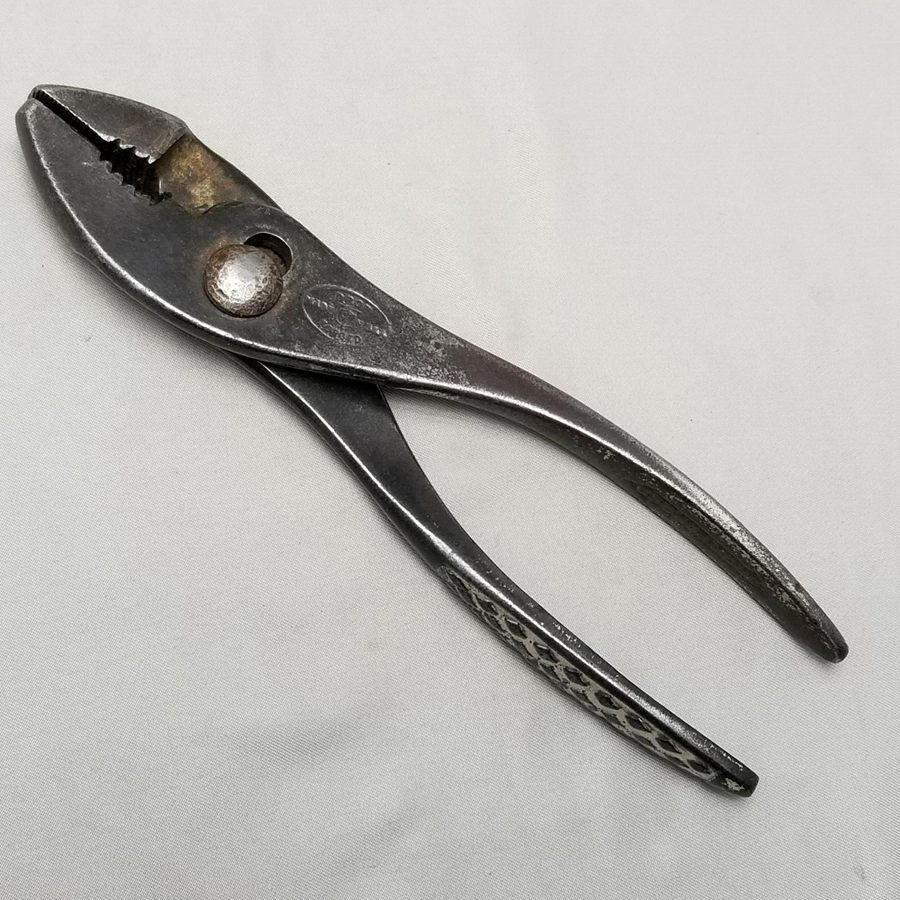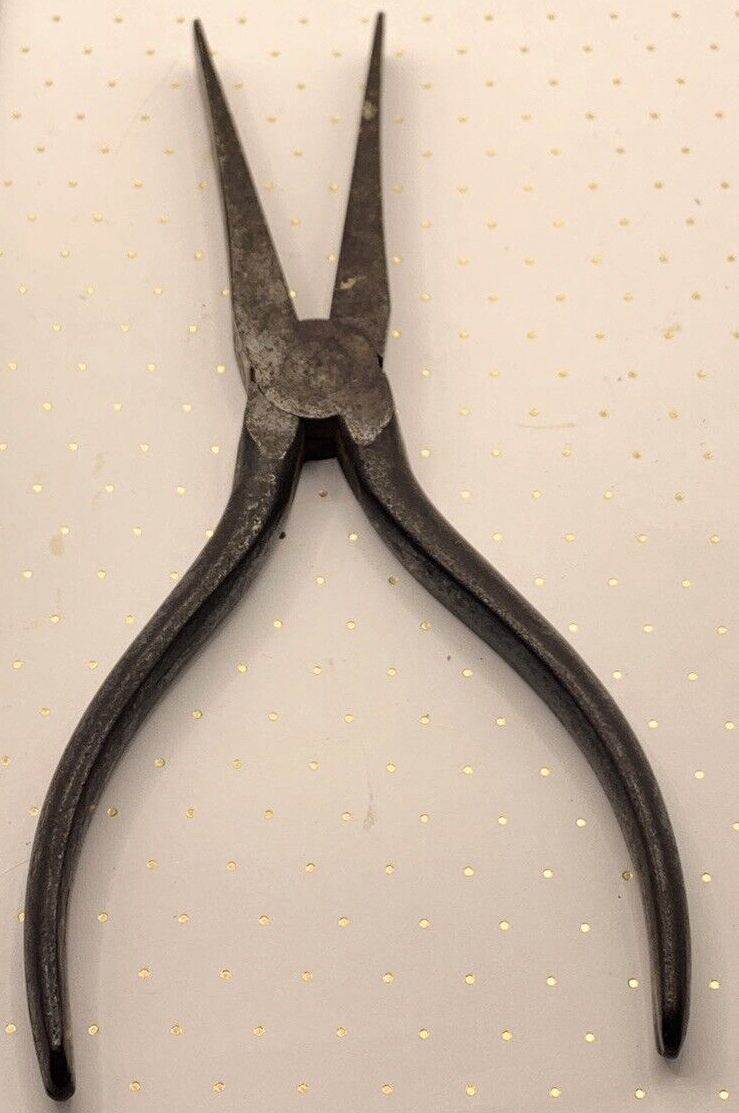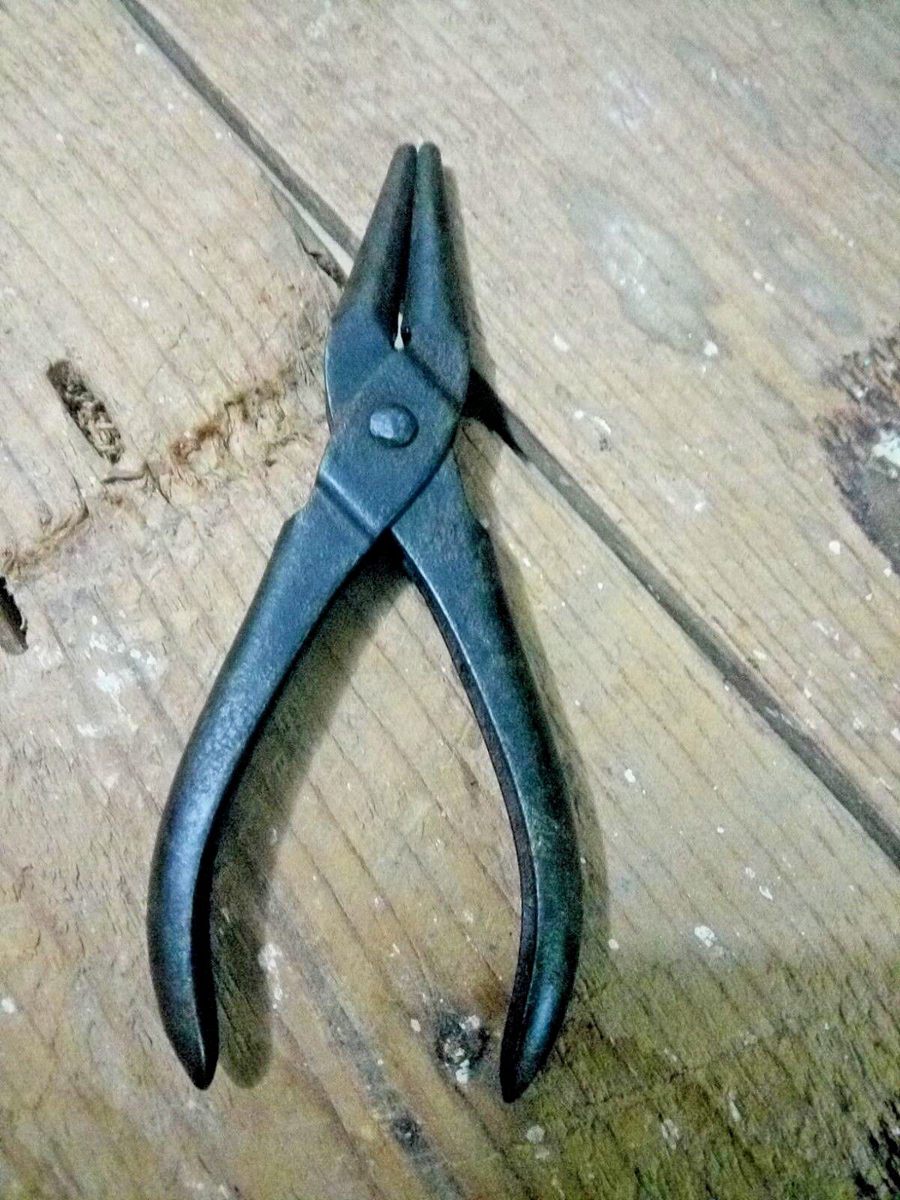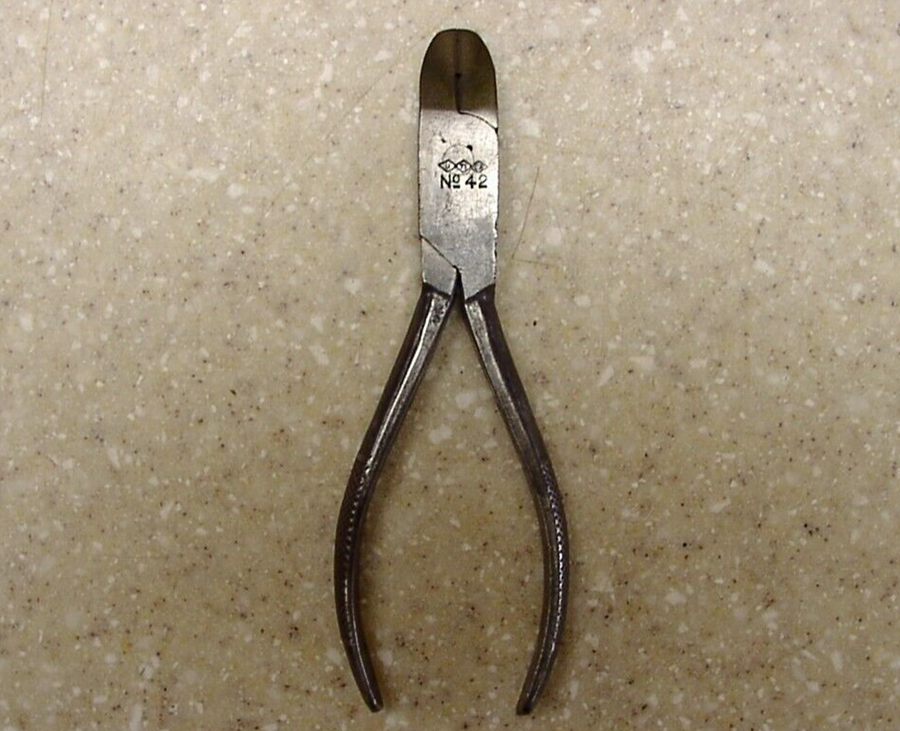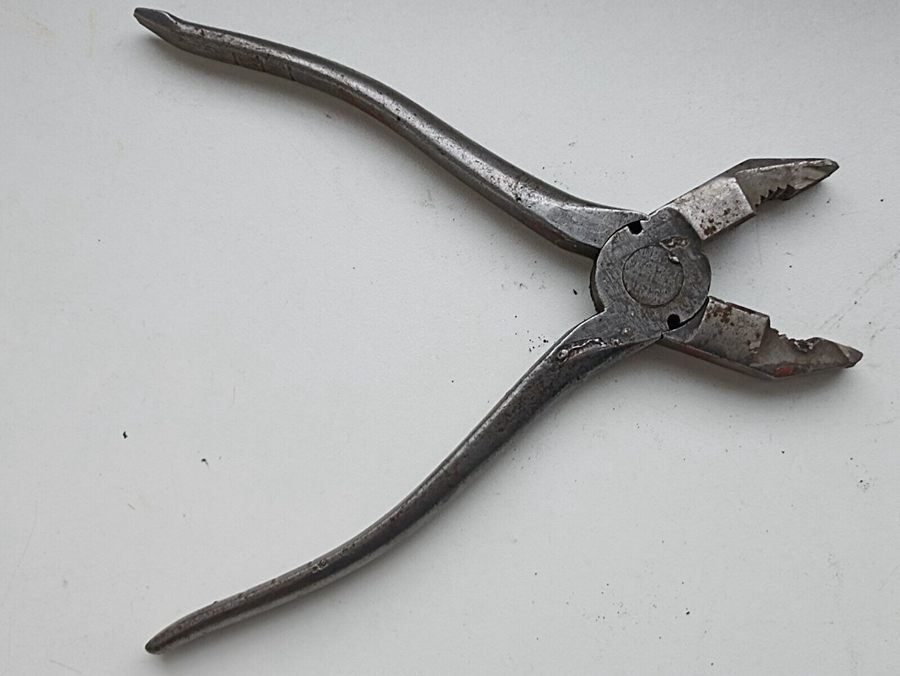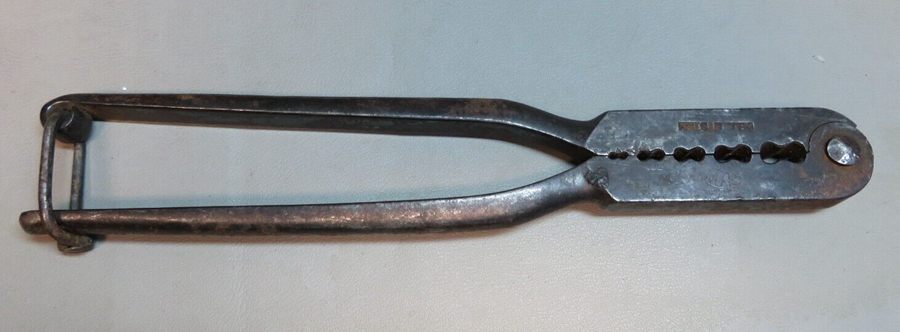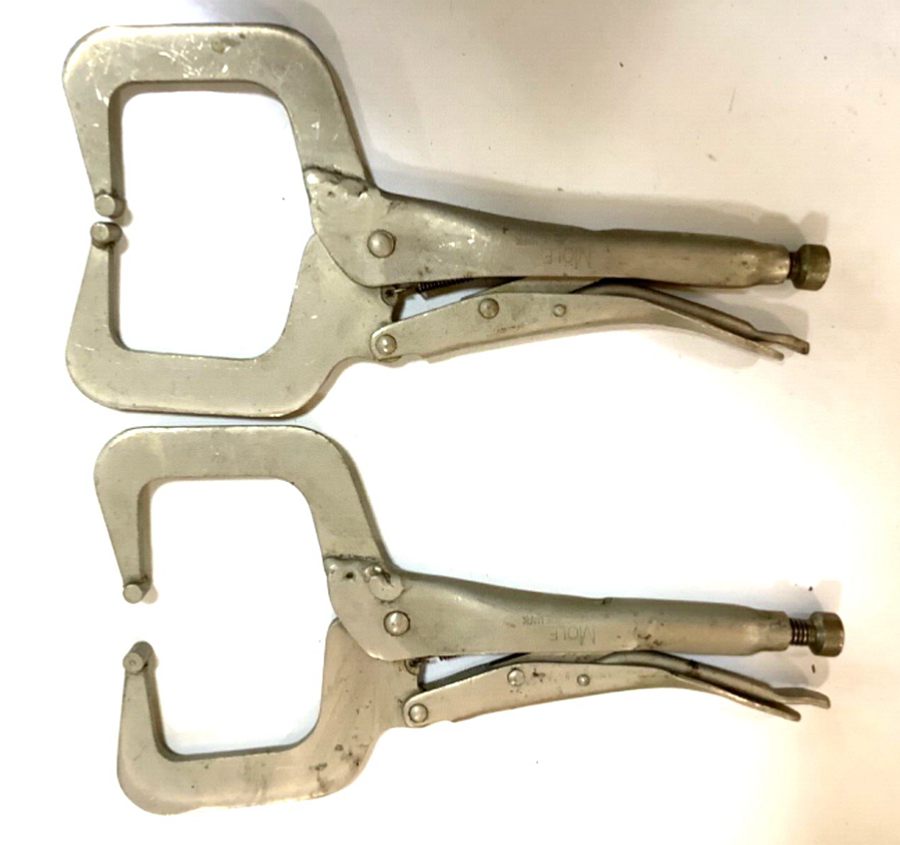Antique pliers hold a special place in the hearts of collectors and enthusiasts, as they represent an essential tool from a bygone era. As the versatile and indispensable mechanic extensions of the human hand, pliers have been widely used by plumbers, electricians, carpenters, glazers, cobblers, jewelers, and watchmakers. Due to their diverse applications, the design of pliers varies significantly, which leads to a fascinating assortment available for collectors.
To effectively delve into the world of antique pliers, it’s crucial to familiarize yourself with the most common types, identification methods, and determining their value. Paying attention to materials, construction methods, and manufacturer’s marks will aid you in identifying the age, origin, and uniqueness of these vintage tools. By doing so, you can confidently assess your potential acquisitions and build an impressive collection that reflects your passion for these historical artifacts.
As you embark on your journey into collecting antique pliers, remember to maintain a curious and open mind, ready to uncover the stories and history behind each piece. The satisfaction of understanding their previous applications and their place in the evolution of tools and craftsmanship makes this hobby a rewarding and engaging experience.
Table of Contents
The History & Evolution of Antique Pliers
Antique pliers have played a crucial role in various trades and industries throughout history, and their designs have evolved to suit specific needs and applications. In this section, you’ll learn about the history and evolution of antique pliers.
Early pliers, dating back to the time of the ancient Egyptians and Romans, were primarily used by blacksmiths and metalworkers to manipulate hot metal. These early pliers were made from a single piece of metal and had basic pivot points for added leverage.
The Middle Ages saw the development of more specialized pliers, such as the needle-nose pliers, which were initially used by jewelers and artisans for intricate work. This period also led to the creation of combination pliers containing cutting edges, allowing users to cut and manipulate materials in a single tool.
Advancements during the Industrial Revolution further diversified the use and design of pliers. Examples of this diversification include:
- Slip-joint pliers: These pliers featured an adjustable pivot point, allowing them to accommodate various widths and sizes of objects.
- Locking pliers: Also known as vise-grips, they were designed to hold and secure objects in place while working on them.
- End-cutting pliers: These specialized pliers were used to cut the ends of wires flush with surfaces.
As pliers continued to evolve, specialized versions emerged to cater to electrical and electronics industries, such as diagonal-cutting pliers used for cutting wires and cables, and lineman’s pliers used by electricians for cutting and bending wires.
Given their long and storied history, it’s essential to properly identify and value antique pliers. To do so, consider factors such as:
- Material: Early pliers were made from various metals, including iron, steel, and brass. Later models featured wooden or bone handles.
- Manufacturer: Pliers made by well-known manufacturers or brands often fetch a higher value.
- Rarity: Uncommon or unique pliers will typically be worth more, as are those with ornate designs or historical significance.
- Condition: As with most antiques, pliers in good condition, showing minimal wear or damage, will generally be more desirable to collectors.
Understanding the history and evolution of antique pliers can help you better appreciate their craftsmanship, uses, and value. Make use of this knowledge when building your collection or discussing these fascinating tools with fellow enthusiasts.
8 Types of Antique Plier and Their Values
Slip Joint Pliers
Slip joint pliers are highly sought after and commonly seen in antique collections. They feature an adjustable pivot point, allowing the jaws to be opened wider or closed tighter for more precise gripping. Collectors may look for identifying markings like logos, patents, or unique design features to determine value.
Flat Nose Pliers
Flat nose pliers, also known as duckbill pliers, are characterized by their wide, flat jaws, intended for gripping without damaging surface materials. Antique flat nose pliers often have a smooth, well-worn appearance and can be made of materials such as iron, steel, or bronze. The value for these pliers typically depends on the brand, age, and condition.
Round Nose Pliers
Round nose pliers, sometimes called needle nose pliers, have a long, pointed tip, making them perfect for precision work like wire bending and jewelry making. Look for any identifying markings, such as brand or patent information, to determine the plier’s value. Age, condition, and material are also factors that contribute to their worth.
Cutting Pliers
Antique cutting pliers were designed for cutting wire, nails, and other materials. They often feature short, sharp jaws with a beveled edge for efficient cutting. Collectors may search for age, distinctive maker’s marks, or material, such as forged iron or steel, to ascertain their value.
Combination Pliers
Combination pliers have both flat gripping surfaces and a cutting edge, making them a versatile tool. The value of antique combination pliers can be determined through factors such as rarity, age, and distinctive markings from a recognized brand or manufacturer.
Tongue and Groove Pliers
Tongue and groove pliers, often referred to as channel lock pliers, have a specialized grooved design that allows the user to easily adjust the jaw opening. Collectors may look for factors like branding or distinctive features, age, condition, and material during value assessment.
Wire Stripping Pliers
Wire stripping pliers are unique in that they often have multiple notches designed for cutting or stripping various gauges of wire. Collectors determine their value based on criteria like age, maker’s marks, quality of the material, and rarity of the specific model.
Locking Pliers
Locking pliers, commonly known as vice grips or mole grips, are characterized by their locking mechanism that allows for a strong, secure grip. The value of antique locking pliers is influenced by factors like branding, age, condition, material, and scarcity.
Remember not to make any exaggerated or false claims and use a neutral, clear, and knowledgeable tone.
Factors to Identify & Value Antique Pliers
1. Brands
When it comes to antique pliers, the brand has a significant impact on their value and collectibility. Some well-known brands that produced high-quality antique pliers include:
- Kraeuter
- O. Barnett Tool Co.
- Channellock
- Linesman
These brands are renowned for their craftsmanship and durability, making their pliers more sought after by collectors.
To help you understand the connection between the brand and the value of antique pliers, here’s a valuation table based on the brand:
| Brand | Average Valuation |
|---|---|
| Kraeuter | $30 – $50 |
| O. Barnett Tool Co. | $40 – $60 |
| Channellock | $20 – $40 |
| Linesman | $30 – $50 |
These valuation ranges are approximate and can vary based on factors such as the tool’s condition and rarity. Keep in mind that these ranges are subject to change as the market evolves.
When identifying the brand of an antique plier, you should look for manufacturing marks or stamps on the tool. Many times, these marks can be found near the base of the handles or on the pivot joint.
By familiarizing yourself with the different brands and their valuation ranges, you can make a more informed decision when buying, selling, or appraising antique pliers.
2. Size
The size of antique pliers can play a significant role in their value and appraisal. Generally, larger pliers are more sought-after by collectors, as they often represent a particular period in the tool’s history or were used for specialized jobs. Smaller, more versatile pliers are also popular, but their value may not be as high as more unique, larger pieces.
Mainly, there are three factors when it comes to size that affect the value:
- Length: Different tasks required different lengths, and rarer sizes usually carry a higher value.
- Width: The width of the gripping surfaces can also vary. Wider pliers were used for broader applications like gripping large objects or acting as a clamp.
- Thickness: The thickness of the metal is also an essential factor, as it can provide insight into the pliers’ age.
Here is a valuation table to help guide your understanding of how plier size may impact the value:
| Plier Size | Average Valuation |
|---|---|
| Small (4-6 inches) | $50 – $100 |
| Medium (6-10 inches) | $100 – $200 |
| Large (10-15 inches) | $200 – $300 |
| Extra Large (15+ inches) | $300 – $400 |
Keep in mind that these average price ranges can change based on the pliers’ rarity, age, and other factors. Also, as a collector, understanding these size factors helps you better identify, evaluate, and appreciate the antique pliers you come across in your collecting journey.
3. Handles
Antique plier handles have significant influence on their value and identification. The following paragraphs explore various handle designs and how they impact the value and appraisal of antique pliers.
Design & Material
The design and material of the handles can provide insight into the era and origin of the pliers. Common materials used for handles include wood, metal, and early forms of plastic such as Bakelite. Intricately designed handles with patterns or ornate engravings have a higher value compared to plain ones. An original patina or signs of wear may also indicate the age and rarity of the piece, contributing to its overall value.
Comfort & Ergonomics
Antique pliers with unique ergonomic or comfortable grip designs typically attract more interest from collectors. These pliers showcase advancements in user comfort and function, which play a role in determining their value. Features such as cushioned or contoured grips, as well as finger notches, can increase the value of antique pliers.
The following table shows the average valuation of antique pliers based on handle type and characteristics:
| Handle Type | Average Valuation |
|---|---|
| Plain Wood or Metal | $20 – $30 |
| Ornate Wood or Metal | $40 – $50 |
| Bakelite or Early Plastic | $30 – $40 |
| Ergonomic or Comfort Grip | $35 – $45 |
| Contoured or Finger Notch | $30 – $35 |
When evaluating antique pliers for purchase or appraisal, closely inspect the handles for their design, material, and ergonomics. These factors contribute to the pliers’ desirability and value among collectors.
4. Finishes
When considering the value of antique pliers, one important factor is the finish of the pliers. The finish can have a significant impact on the valuation, as collectors often look for well-preserved, authentic finishes in their antique tools. In this section, we will discuss different types of finishes and how they affect the value of antique pliers.
Some common finishes found on antique pliers include:
- Polished steel
- Black oxide
- Nickel-plated
- Brass-plated
The polished steel finish is often seen on older, high-quality pliers, and can add value to the tool if it is still in good condition. Black oxide finishes are similar to polished steel but have a more subtle appearance. Nickel and brass platings were popular in the early 20th century, and can also contribute to higher valuations if they are still intact and not excessively worn.
Here is a valuation table for antique pliers based on their finish:
| Finish | Average Valuation |
|---|---|
| Polished Steel | $40 – $60 |
| Black Oxide | $30 – $50 |
| Nickel-Plated | $35 – $55 |
| Brass-Plated | $25 – $45 |
Keep in mind that these valuations are not set in stone and can vary depending on factors like the overall condition of the pliers, rarity, age, and brand. Be aware that finishes in poor condition, such as excessive rust or tarnishing, can detract from the value of the pliers.
It’s essential to take a close look at the finish when appraising antique pliers, as it can greatly affect their value. By understanding the impact of different finishes on the value of antique pliers, you can make more informed decisions when buying or selling these collectible tools.
5. Materials
When identifying and valuing antique pliers, one important factor to consider is the material from which they are made. The type of material used can provide insight into the age and rarity of the tool, as well as its potential value.
Antique pliers were typically crafted from materials such as wood, iron, brass, and steel. Here are a few materials you might encounter and how they may impact the value of the pliers:
- Wood: Early pliers made from wood are relatively less common. If you find a well-preserved wooden pair, their rarity could increase their value. Keep in mind that they should show signs of hand carving or finishing, which indicates their age.
- Iron: Iron was a common material used for making pliers during the 19th and early 20th centuries. Depending on the age and condition, iron pliers could hold a moderate value.
- Brass: Brass pliers, often found in watchmaking and jewelry settings, can be more valuable as they were usually made for specific applications and may exhibit intricate designs.
- Steel: Vintage steel pliers, made after the Industrial Revolution, are less valuable in general. However, the quality and features of specific designs may impact their desirability and overall value.
The following table presents average valuations for antique pliers based on the material:
| Material | Average Valuation |
|---|---|
| Wood | $400 – $500 |
| Iron | $150 – $250 |
| Brass | $300 – $400 |
| Steel | $75 – $150 |
6. Age
Age is an important factor when it comes to determining the value of antique pliers. In general, antique tools are considered to be at least 100 years old, while vintage tools are at least 20 years old. When identifying the age of antique pliers, you should pay attention to several details, such as patina, materials, and signs of wear. The older and more unique the pliers, the higher their value may be.
Various factors can help you determine the age of antique pliers, including:
- Patina: Look for signs of use and wear on the pliers, which may be indicated by tarnished or rusty materials or chipped paint.
- Materials: Antique pliers were usually made from iron or steel, while vintage pliers might also feature other materials, such as plastic or rubber handles.
- Manufacturer: Research the history of the pliers’ manufacturer, as certain brands have been producing pliers for a longer period of time and may offer clues to the pliers’ age.
To help you understand the impact of age on the valuation of antique pliers, refer to the table below:
| Age of Antique Pliers | Average Valuation |
|---|---|
| 100+ years (Antique) | $100 – $200 |
| 20-99 years (Vintage) | $50 – $100 |
| Less than 20 years | Not considered antique/vintage; lower value |
Final Thoughts
Antique pliers come in various types and designs, with each tailored to serve a specific function for professions like plumbers, electricians, carpenters, and jewelers. As you dive deeper into your collection, it’s essential to know how to identify and determine the value of these vintage tools.
When identifying antique pliers, look for maker’s marks or stamps as indicators of their origin and age. Conducting research on antique tool history and consulting old catalogues can offer insight into the earliest date a particular tool may have been manufactured.
As you evaluate the value of antique pliers, consider factors like rarity, condition, and the materials used in their construction. Genuine antique tools can be found and purchased on specialized websites, such as Bob Kaune. Exploring these platforms can help you ascertain different types of tools in a wide price range.
Remember, expanding your knowledge of antique pliers and their history will ultimately enhance the enjoyment and appreciation of your collection. As you become more familiar with the intricacies of antique pliers, you will develop a keen eye for identifying and valuing these timeless tools.
FAQ
What are the different types of antique pliers?
Antique pliers come in various types, each designed for specific tasks and professions. Some common types of antique pliers you might encounter include:
- Slip joint pliers: feature an adjustable pivot point, allowing the jaws to open wider for different-sized objects
- Lineman’s pliers: used by electricians for cutting, gripping, and bending wire
- Needle-nose pliers: known for their long, tapered jaws, perfect for working in tight spaces or with small objects
- Diagonal pliers: designed with cutting edges on the jaws, used to cut through materials like wire or nails
- Locking pliers: have a locking mechanism that allows the user to grip objects tightly without exerting constant pressure
How can I identify my antique pliers?
When trying to identify your antique pliers, consider the following factors:
- Tool materials/types: Look for material quality and design. Antique pliers are often made of iron or steel, with wooden or metal handles. The type of pliers can also offer clues to their age and origin.
- Manufacturing marks: Many manufacturers stamped or engraved their logo or company name onto the tools. Inspect your pliers for any identifying marks or symbols.
- Actual tool condition: Wear and tear can help you determine the age of the pliers. Older tools may show signs of rust, pitting, or patina, while newer ones might have less damage.
What factors affect the value of antique pliers?
Determining the value of antique pliers depends on several factors:
- Rarity: Unique or hard-to-find pliers may be more valuable than common ones.
- Condition: Tools in better condition will generally have a higher value.
- Manufacturer: Established brands or well-known manufacturers may increase the value of the pliers.
- Age: Older pliers, especially those dating back to the 19th century or early 20th century, may be more valuable.
- Provenance: If the pliers have a documented history or come from a reputable collection, their value may be increased.
Remember to consult specialized guides, collector forums, or professional tool appraisers to get an accurate valuation of your antique pliers.

